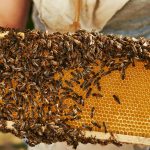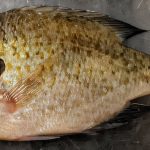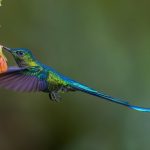How octopus maps stir up conspiracy thinking—even without tentacles
For centuries, mapmakers have used the image of the octopus to depict threats—whether political, economic, or ideological.
With its many reaching arms, the octopus has...
U.S. bee apocalypse? Scientists uncover cause behind massive hive loss
Scientists at the U.S. Department of Agriculture (USDA) believe they have uncovered the cause behind a massive and alarming collapse of honey bee colonies...
Whales blow bubble rings at humans—and it might be a friendly hello
For the first time ever, scientists have documented humpback whales blowing perfect bubble rings during close and curious encounters with humans.
Much like someone blowing...
Most freshwater fish in southern California carry human-infecting parasites, study finds
A new study has found that more than 90% of freshwater game fish in Southern California are carrying parasites that can infect humans.
These parasites,...
Drunk in flight? Some birds may be sipping alcohol daily
Birds that sip nectar or snack on fruit could be getting more than just sugar—they might also be getting a bit of alcohol.
A new...
Scientists discover chimpanzees use stones to make sounds—possibly to communicate
A new five-year study has revealed that wild chimpanzees in West Africa may be using stones to communicate with one another.
This remarkable behavior, documented...
Why and how do ants walk in a perfect line
In the world of ants, order isn’t optional.
These tiny insects live in colonies with millions of others, working together as a team to forage,...
Hidden cotton virus was in U.S. fields for nearly 20 years before discovery
A virus that damages cotton crops has been quietly spreading through U.S. fields for nearly two decades—without anyone noticing.
Scientists once believed the cotton leafroll...
Why squirrels are everywhere and raccoons are rare
If you've ever noticed that some animals seem to be everywhere—like squirrels—while others, like raccoons or foxes, are much harder to find, you're not...
New study reveals ice age animals’ survival secrets from 2.6 million years ago
A new study has revealed when and how animals like the woolly mammoth, musk ox, and arctic fox developed special adaptations to survive the...










